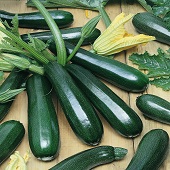Great ideas from Weight Watchers.com
Summer's the time for the year's hottest activities.
It's almost summertime and, as the lyrics go, "...the livin' is easy." But you needn't put exercise on hold just because the temperature is up. Summer is a great season to get in shape.Make your mantra "fun in the sun," because the more you enjoy yourself, the more likely you'll be to make exercise a part of your life.
So shut down the treadmill, slather on the sunscreen and get going. Here are some hot ideas:
Keep the beat.
Summer dancing is a great way to get in shape. You can find every kind of class, from belly dancing, tap and salsa to ballroom and swing. Check the newspaper classifieds, Yellow Pages or postings on local bulletin boards.
Go berry picking.
Stop, stoop and fill your basket with low-calorie, all-natural berries. There are pick-your-own blueberry, raspberry and strawberry stands in most rural areas. Check with the local chamber of commerce for a list of picking possibilities.
Head to the beach.
Why not put on a big straw hat and go for a stroll? You'll hear the surf, see the sights and tone your calves and thighs. Or get some friends together for a challenging game of beach volleyball.
Join a team.
Even if you're not a super jock, summer sports can be fun. There's probably a volleyball, tennis or softball team to match your ability. And the more you put your spirit into the competition, the more calories you'll cut. Check with your YMCA or community center for a list of local teams.
Aquacise.
Do aerobics in the pool, either alone or in a group. Try a half hour of jumps, sidekicks, knee lifts or simply walking in the pool. For added resistance, use water noodles or water weights.
Bonus: When you exercise in the water, you don't have to worry about stressing your joints. If you're interested in a class, check your public pool, spa or YMCA programs.
Commune with nature.
Bird watching, walking through the woods, visiting the zoo or botanical gardens. Not only do they offer you the chance to exercise but they also encourage your spirit to soar.
Rely on your personal power.
While the weather is warm, you can run your errands with your own energy. Instead of going to the store in your car, walk or bike to your destination.
Summer Smarts
But no matter which summer calorie-burner you choose, use precautions to safeguard your health in the heat:
1. Take your pulse.
In the heat, your heart rate may increase. Slow the intensity of your exercise routine if your pulse races above a comfortable range.
2. Watch the clock.
Stay indoors or in the shade during the hottest time of the day (between 11 a.m. and 2 p.m.).
3. Drink up.
Take in plenty of liquids—especially water. Begin with 8 to 16 ounces at least 15 minutes before your workout, then drink regularly while you're exercising. Make sure to carry a full bottle of water with you everywhere, and avoid caffeine: it can contribute to dehydration.
4. Be flexible.
On days when the temperature is soaring, choose an air-conditioned indoor exercise routine.




 Orange and Yellow fruits and vegetables
Orange and Yellow fruits and vegetables







